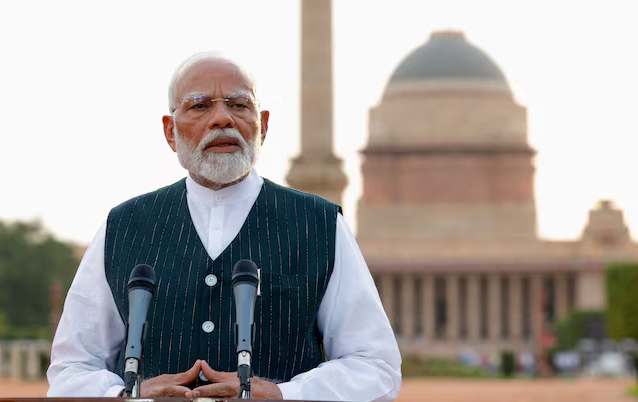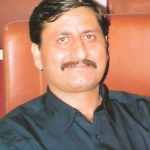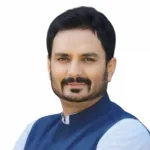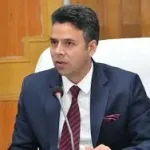Twenty three years ago when Narendra Modi became the chief minister of Gujarat, there was hardly anyone who thought then that his leadership would make him not only one of the most successful Prime Ministers of India but also a global icon. Yet he is Modi who made all the difference, courtesy to his charisma and political will with a noble vision. As he completes two decades of a non-stop stint as an able and longest serving administrator at the age of 74 today, his public life has already made a history which none of his predecessors could match as PM in their lifetime and which only resembles that of former US President Bill Clinton.
Since October 2001, when he was administered the oath of the office of the Chief Minister of Gujarat, he has been chairing an elected government for around 8380 days without any break which beats the record of the first PM Jawaharlal Nehru and his daughter Indira Gandhi who served as the head of a government for 6,130 days and 5829 days respectively. In comparison, Dr Manmohan Singh who was the immediate predecessor of Modi on two consecutive terms during the UPA rule worked for 3656 days. Within the BJP, Modi has also been the most successful figure as a CM or PM. This has made him dependable, with a huge mass acceptability, to his party in any election anywhere as he has the experience of leading a state government and is blessed with the art of campaigning.
Riding on the crest of the Modi wave the BJP came to power at the Centre with a majority in 2014. It also ousted the Left from power in Tripura which was once considered a Red Bastion over three decades and grew significantly in other North Eastern states during the last seven years. Further, Modi has scored many firsts as the PM. At the Republic Day parade of 2015, he invited Barack Obama, the then US President as the chief guest before becoming the first Indian PM to visit Israel in July of 2017. He is the first PM who met three consecutive US Presidents including Donald Trump whom he hosted in India and met Joe Biden at the White House recently. He also ensured one of the biggest repatriations of the Indians from abroad after they got stuck overseas due to a worldwide shutdown in the wake of the pandemic. This is a rare and unparalleled feat which has put him above in comparison of the past PMs.
From his ascent as the Chief Minister of Gujarat in 2001 to his current role as the nation’s Prime Minister, Modi’s tenure has been characterized by a series of far-reaching reforms and bold initiatives that have reshaped the trajectory of both Gujarat and India. His leadership has ushered in profound changes, most notably in the areas of economic reform, infrastructure development, and digital transformation.
Modi’s rise to national prominence was rooted in his years as Gujarat’s Chief Minister, where he pioneered what came to be known as the “Gujarat Model,” a governance blueprint that emphasized infrastructure development, efficient governance, and investor-friendly policies. It was under his leadership that Gujarat, once plagued by water scarcity and power shortages, witnessed remarkable progress. The Sujalam Sufalam Yojana, a large-scale water management project, transformed the state from a region in need to one of surplus, laying the foundation for Modi’s national Jal Jeevan Mission, which seeks to provide tap water to every rural household by 2024.
The Jyotigram Yojana, which brought uninterrupted electricity to Gujarat’s villages, similarly became a model for the national Saubhagya Scheme, aiming for universal household electrification. Such initiatives, launched at the state level, became templates for broader national schemes when Modi assumed the office of Prime Minister in 2014. As Prime Minister, Modi has continued his reformist agenda on a national scale, embarking on ambitious projects to propel India forward in the digital age. His *Digital India* mission has expanded internet access across the country, making India a global leader in digital transactions, most notably through the implementation of the Unified Payments Interface (UPI). This has revolutionized how transactions are conducted and positioned India at the forefront of the real-time payments revolution.
In economic governance, one of the defining moments of Modi’s tenure was the introduction of the Goods and Services Tax (GST) in 2017. This ‘One Nation, One Tax’ system sought to unify India’s complex and fragmented tax structure, facilitating smoother trade across states. While its implementation has been met with challenges, the GST stands as a landmark reform in India’s economic history. Responding to the economic disruptions caused by the COVID-19 pandemic, Modi launched the Atmanirbhar Bharat campaign in 2020, aiming for self-reliance and boosting domestic manufacturing. This was supported by the Production Linked Incentive (PLI) schemes, spanning 14 key sectors with investments worth Rs 1.97 lakh crore, designed to reduce import dependence and encourage domestic production. These measures have played a crucial role in India’s economic resurgence, with the nation’s GDP growing and foreign direct investment reaching unprecedented levels.
Modi’s governance has also been characterized by his emphasis on Jan Bhagidari, or citizen participation in governance. His belief in involving citizens in the implementation of policies, thereby turning development into a Jan Andolan or mass movement, has been a hallmark of his approach. This participatory governance model has played an important role in ensuring that initiatives, whether in sanitation, water conservation, or public health, gain widespread public support and momentum. As history will record, Narendra Modi’s 23 years in public office reflect a period of transformative leadership. From his tenure as Gujarat’s chief minister, where he laid the foundation for sweeping reforms, to his role as India’s Prime Minister, Modi’s vision has redefined governance in India. His focus on infrastructure, digital transformation, and economic reform has cemented his legacy as one of the most influential leaders in modern Indian history, shaping not only the nation’s present but also its future trajectory.
Digital India has played an important role in the government’s push for financial inclusion, especially through the PM Jan Dhan Yojana, which has opened 533 million bank accounts. As a result, India’s poverty rate fell from 55.1% in 2005 to 16.4% in 2021, lifting 415 million people out of poverty. The digital initiative also supports StartUp India, which has helped create a thriving startup ecosystem, recognizing over 140,000 startups and generating more than 1.5 million direct jobs. Sanitation has been another major focus for Modi. The *Swachh Bharat Abhiyan*, inspired by Gujarat’s Nirmal Gujarat project, is a nationwide cleanliness campaign that has reportedly led to the construction of over 116.8 million household toilets, with the government declaring all villages in India free from open defecation.
Rural development has made notable progress with the PM-Kisan Samman Nidhi, which supports 110 million farmers, and the Jal Jeevan Mission, which has provided tap water to nearly 78% of rural households. Modi’s governance approach of “Vikas Bhi, Virasat Bhi” (Development along with Heritage) aims to balance cultural preservation with modernization. Efforts like restoring the Kashi Vishwanath Corridor, building the Ram Mandir, and recovering over 640 artefacts for India reflect the administration’s focus on these aspects. On the environmental side, initiatives such as Van Mahotsav and Ek Ped Maa Ke Naam have encouraged tree planting and conservation. The Ek Ped Maa Ke Naam campaign has resulted in the planting of 800 million saplings across the country. On the international stage, Modi introduced the Lifestyle for Environment (LiFE) movement at COP26, encouraging individuals and communities to adopt sustainable habits to combat climate change.
Modi’s Jan Bhagidari (people’s participation) approach is a consistent theme in his initiatives, and over the past decade as Prime Minister, he has coined several motivational slogans to inspire citizens. For example, Modi frequently promotes the idea of “Sabka Saath, Sabka Vikas, Sabka Vishwas, Aur Sabka Prayas” (Everyone’s support, development, trust, and effort). He advocates for “Minimum Government, Maximum Governance”, believes the administration should “Reform, Perform, and Transform**”, and envisions India as “Ek Bharat, Shreshtha Bharat” (One India, Great India).
Modi’s governance reforms included scrapping more than 1,200 outdated laws and reducing 39,000 compliances to simplify administration. Some of his earliest slogans were “Swachh Bharat” (Clean India) and “Beti Bachao, Beti Padhao” (Save the girl child, educate the girl child). Currently, Modi emphasizes the slogan “Viksit Bharat” (Developed India), outlining his vision for the nation’s future with long-term development goals and a stronger global presence which he hopes India will attain the status of a developed nation by 2047.
(The author is the founder and Chairman of Centre for Narendra Modi Studies and works as a Professor in Comparative Literature. He can be reached at [email protected])








